OSHA Requirements for GHS Secondary Container Labels
GHS secondary container labels are a crucial step to ensure continuous safe transportation, handling, and use throughout the life of a hazardous material. But secondary container labeling can be overlooked or misunderstood. Let’s dive into the world of GHS secondary container labeling, including:
- What it is
- Why/When it's necessary (and when it’s not)
- Key requirements and tips
Secondary container labeling starts with GHS and HazCom
Let’s start with the two governing bodies that guide and enforce the labeling of hazardous materials and chemicals – the Globally Harmonized System (GHS) of Classification and Labeling of Chemicals and the OSHA HazCom (Hazard Communication) Standard 29 CFR 1910.1200.
- GHS is a set of guidelines established by the United Nations to standardize the classification and labeling of chemicals. It requires chemical manufacturers, distributors, and importers to evaluate the hazards of their products and provide appropriate safety information to users. GHS labels and their six elements are specifically designed to promote safety and minimize the risks associated with handling hazardous substances.
- The OSHA HazCom Standard is a regulation in the United States that is based in part on GHS guidelines. It outlines the requirements for hazard communication programs in the workplace. It was created to ensure that workers are aware of the potential hazards associated with the chemicals they use, handle, or come in contact with. In the United States, OSHA updated its HazCom Standard to align with GHS in 2012.
Primary vs. secondary container labels: what’s the difference?
In general, the difference comes down to use cases and size. Primary containers are usually for purposes of transport and storage, while secondary containers are generally used in the workplace for specific tasks. Examples of secondary containers might include spray bottles used for cleaning or disinfecting solutions, small containers used to hold solvents or paints, or jugs or bottles used for storing laboratory chemicals.

Primary containers
Primary containers are generally large storage containers, including drums, tanks, or silos. Primary container labeling is vital for ensuring workplace safety as it’s essential that anyone coming into contact with these substances fully understands the risks they pose. Primary or shipped container labels are used on any container leaving the workplace. These labels must have the six required elements of a GHS chemical label.
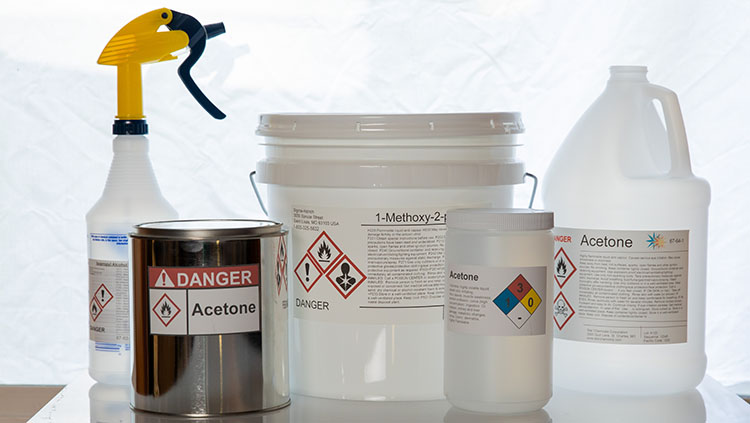
Secondary containers
Secondary containers are smaller receptacles, such as bottles and packages, that hold a smaller portion of the hazardous material. Secondary container labels are sometimes called workplace labels. These containers don’t always fall under the same requirement that primary containers do. A best practice is to match this label to the primary container label for consistency, if possible. However, other labeling options can be used.
Secondary container labels provide continued safety
Secondary container labeling ensures the continued safe transport, handling, and use of hazardous chemicals. Since secondary containers are usually smaller, easily transported, and more accessible to workers and bystanders than primary containers are, proper labeling is just as important as it is for primary container labeling. Failure to follow OSHA HazCom requirements can lead to worker injuries, property and environmental damage, fines, work stoppage, and more.
Do I always need a secondary container label?
Not always. GHS labels for secondary containers are exempt when the following criteria are met:
- The material is used within the work shift of the individual who makes the transfer
- The worker who made the transfer is in the work area the entire time during use
- The container stays within the work area and in the possession of the worker who filled the container
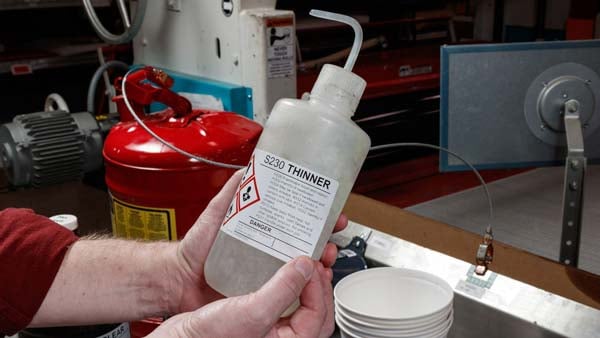
Secondary container labels should contain at least two key elements
While primary container labels must contain the six required elements for GHS labeling, secondary container labels require a minimum of two elements, according to OSHA. They are:
- Product Name/Identifier found on the safety data sheet
- General Hazard Information that conveys the physical and health hazards of the hazardous material. According to CFR 1910.1200(f)(6)(ii), this can be communicated via “words, pictures, symbols, or combination thereof”
While the labeling requirements for secondary container labels are less strict, they must be accompanied by supporting safety information, e.g., safety data sheets, as detailed in OSHA CFR 1910.1200(b)(4)(ii). This ensures employees have access to specific information regarding any hazardous chemical in the workplace. A best practice is to apply as many of the six elements of a compliant GHS label to your secondary containers as possible.
Brady can help you label any size container for HazCom compliance
Conquer your HazCom and GHS labeling needs with the help of Brady’s wide variety of labels, printers, and more. From small beakers to large drums, we can help you create the GHS labels you need to be compliant, efficient, and effective.
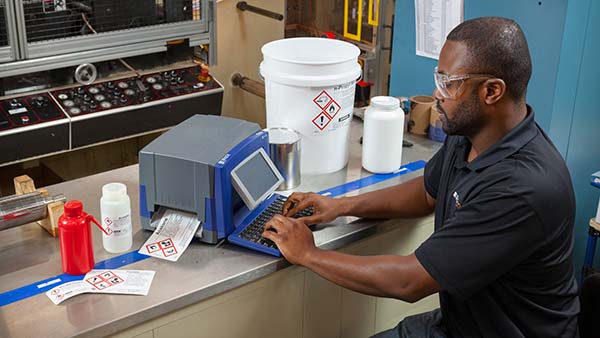
GHS Label Printers
Print your labels exactly how you want, when you want, with our full lineup of durable, easy-to-use printers. Combined with premium Brady labels and software, you’ll be on your way to compliant GHS labeling that lasts.
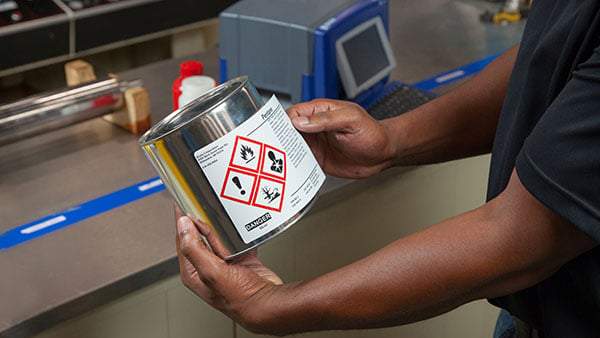
Preprinted GHS Labels
Find pictograms, write-on labels, and everything you need to label on the spot or restock materials for your Brady GHS label printer.
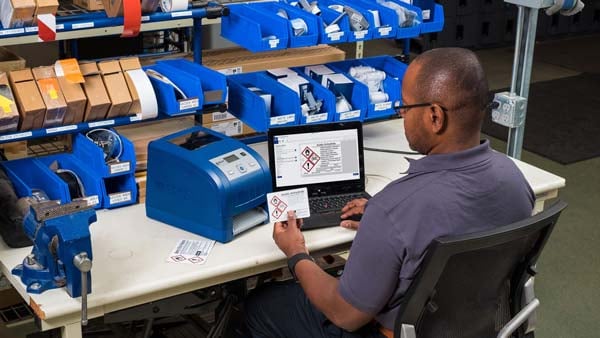
GHS Label Creation Software
The Brady Workstation GHS Label App allows you to easily create GHS labels right from your Safety Data Sheets (SDS). Just enter SDS data one time and then create any size label and print it at any time.
